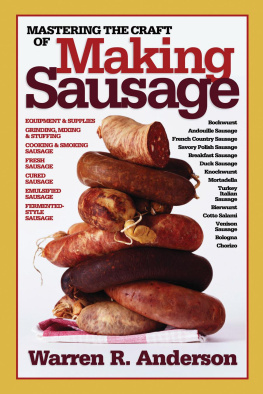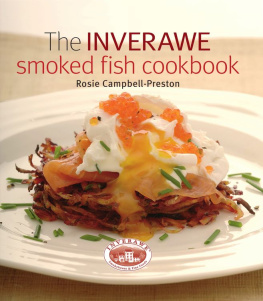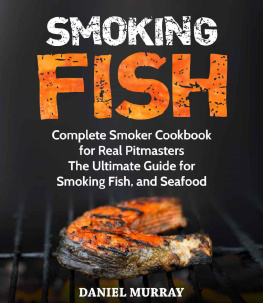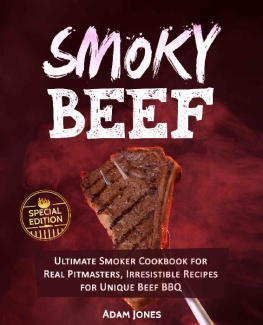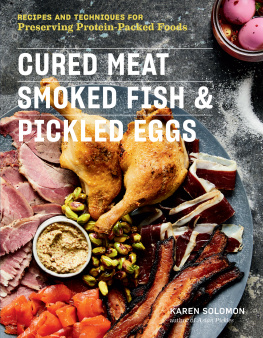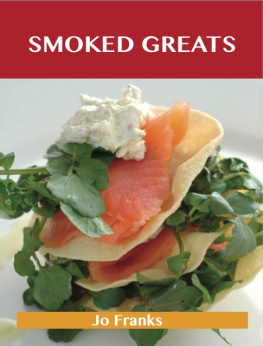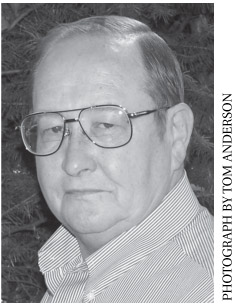About the Author
Warren Anderson has worked as a chemical technician, an electronic technician, a carpenters helper, a bilingual social worker, an Asian business specialist, and an instructor of English as a foreign language. As an English instructor, Mr. Anderson taught at several Japanese universities for over twenty years. He also owned and operated a private English school in Kyushu, Japan. He speaks Japanese fluently.
Mr. Anderson is a graduate of the University of Oregon, where he studied the Japanese language and majored in East Asian Studies. He also earned a masters degree in international business at Sophia University in Tokyo, Japan.
While teaching and living in Japan, he took up food smoking as a hobby, and he has pursued that hobby earnestly since 1985. At one point, he seriously considered launching a new career in Japan as a professional food smoker. He concluded, however, that it would be a better idea for him to use his teaching skills to write a manual about food smoking. Consequently, in 1995, he began to write this book so that he could share with others the knowledge that he had accumulated.
Mr. Anderson returned to the United States in 1998, and he is presently semi-retired and living with his wife in Aloha, Oregon, a suburb of Portland.
Acknowledgments
I began food smoking about 20 years ago, and my first 15 years of food smoking were done in Japan. Because of that, many Japanese from various walks of life have contributed, in some way, to this book. As a way of saying thanks to all the Japanese who were so helpful, I would like to give a few examples:
The butcher in the grocery store next to my English school provided me with much of the raw material for my smoking. Since selling meat was his business, he was happy to make the sales. However, most of the time I did not want to buy the items he had in the display case; I wanted the meat cut in a special way, or I wanted something that is normally not sold in Japanese butcher shops such as pork liver or beef heart. In every case, he provided me with the items I needed at a reasonable price. In many cases, he had to make special arrangements with the slaughterhouse to have the item prepared. One unforgettable day, he loaned me a butchers apron and a butchers hat, and invited me to help him butcher a whole side of beef. In those few hours, he taught me a great deal about the different cuts of beef.
The fishmonger in the same grocery store gradually learned that when I came to buy seafood, I would invariably ask some esoteric questions about finfish and other ocean creaturesand he, invariably, was able to answer those questions. Few people in this world know more about seafood than a Japanese fishmonger.
At my request, the pharmacist down the street from my English school made a special order for a 500-gram jar of sodium nitrite for me to use in my curing formulas. However, because he sold it to me, he felt that he was personally responsible to make sure that I was using it correctly; he wanted to be absolutely sure that my products would be safe and wholesome. He borrowed copies of my basic curing formulations and spent over an hour by long-distance telephone (at his expense) talking to an expert in the Japanese government ministry in Tokyo that regulates food additives. To the great relief of the pharmacist, my formulations were pronounced safe and wholesome.
Because I taught English as a foreign language, I often taught English to university professors, scientists, researchers, and the like. Many of these men and women were specialists in areas related to animal husbandry, food, or food technology. I would teach English to them, and they would offer food-related information to me. Sometimes I felt more like a student than a teacher. These people, too, have made a contribution to this book, and I am indebted to them.
I have several American friends whom I met while teaching English in Japan, and most of them are still there: Bob Norris, Bill Cornet, Wes Injerd, and Richard Evanoff. Each of these men gave me great support and encouragement in the writing of this book. They instilled in me the determination to see the book through to completion. Two of them Bob and Richardare published authors.
My family, relatives, and friends here in the United States have also been very supportive and encouraging. Many of them have had to endure sampling the same smoked product over and over again until I was satisfied with the result. These people are too numerous to list by name, but I do want to mention my big sister, Patricia Brady. Patricia was the person who got me interested in food smoking; she brought some home-smoked steelhead with her when she came to visit us in Japan in 1985.
Warren R. Anderson
Aloha, Oregon
May 10, 2005
APPENDIX 1
Spices, Herbs, and Seasonings
Comments on the applications of the various spices, herbs, and seasonings that are listed below are generally limited to their use for smoked food products and sausage. Culinary specialists, among others, distinguish between a spice and an herb. I have not necessarily maintained this distinction in the descriptions that follow.
ALLSPICE The name of this spice comes from the fact that it has a flavor similar to a blend of three spices: cinnamon, cloves, and nutmeg. It is most commonly used with red meats such as beef, pork, and lamb.
ANISE SEEDS These small seeds have a mild licorice flavor and are sometimes used in sausage. Some varieties of Italian sausage, for example, use anise seeds as an essential ingredient.
BASIL This essential herb for Italian cooking is also used to season lamb, poultry, fish, and shellfish. It is used occasionally for other meats such as beef, pork, and game. Basil is a member of the mint family.
BAY LEAF Bay leaf is very pungent. Use sparingly. It goes well with all red meats, variety meats (tongue, heart, and so forth), and especially game meats. If used in powdered form, consider a pinch (less than teaspoon, or 0.6 ml) to be equal to one bay leaf.
BLACK PEPPER See Pepper.
CAYENNE True cayenne is extremely hothotter than red pepper. Quite often, unfortunately, the names and labeling of these two spices are confused. Nevertheless, both produce lots of heat, and they are used most often to flavor highly spiced meats. Neither cayenne nor red pepper is related to common black pepper.
CELERY SEEDS The seeds come from a plant related to the common celery that we eat as a vegetable. Use this spice sparingly in sausages and marinades. It has a bitter, celery-like flavor.
CINNAMON The use of cinnamon to flavor pork, lamb, and other meats is not unheard of, but you should try it cautiously. Many palates rebel at the combination of cinnamon and meat.
CLOVES Use judiciously with pork, beef, or fish. Cloves are very pungent. Used in excess, cloves can be mouth numbing and overpowering.
CORIANDER SEEDS The ground seeds have a mild flavor somewhere between the flavor of nuts and citrus fruit. Taste a pinch of it. If you like it, use it on any kind of meat, poultry, or fish.
CUMIN SEEDS Cumin is an essential ingredient in chili powder and curry powder. It has a strong and spicy-sweet taste, and it is commonly used to season meats. The Germans use it to flavor some varieties of sausage.
DILL Both dill seeds and dried dill leaves are used (the plant and leaves are sometimes called dillweed). Both have a mild, caraway-like taste. Dill is often used on fish, lamb, and fowl.


